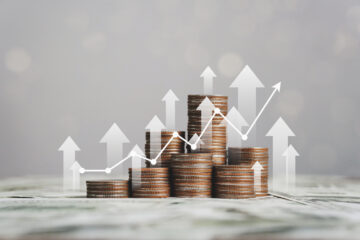Charting the U.S. Economy Yellen Will Leave to Successor Powell

published Nov 20, 2017, 11:00:01 PM, by Vince Golle
(Bloomberg) —
At the direction of President Donald Trump, the Federal Reserve chairmanship baton will be passed to Jerome Powell from Janet Yellen, and with it, a U.S. economy that’s been uninspiring in terms of growth yet remarkable in its longevity.
America’s economic expansion has run for roughly 100 months and is already the third-longest on record, yet the average growth rate is more subdued than the previous three periods. As for the Fed’s mandate — maximizing employment and keeping prices stable — the report card is mixed.
The following nine charts capture the nation’s ascent from the Great Recession of 2007-2009. The recovery, engineered by the Fed through a combination of low borrowing costs and so-called quantitative easing, has also been marked by sharp increases in both household wealth and borrowing.
Yellen said Monday she’ll resign from the Fed’s Board of Governors once Powell is sworn in as chairman, removing the question of whether she would stay on in a diminished role. Trump nominated Powell for the position earlier this month, and his appointment is subject to Senate confirmation.
1. Labor Progress
The jobless rate of 4.1 percent is close to a 17-year low and for eight months has been below the Fed’s estimate of full employment — or the rate at which anyone who wants a job can get one and companies have an incentive to boost pay as demand for workers increases.
2. Inflation Conundrum
As successful as Yellen & Co. have been laying the groundwork for more hiring, Fed policy has yet to engender the desired price stability. During Yellen’s term as chair, the central bank’s preferred inflation gauge has persistently fallen short of the Fed’s 2 percent goal.
3. Slow Velocity
The speed of the economy has been more subdued in the current expansion that began under Fed Chairman Ben S. Bernanke and continued in 2014 with Yellen’s appointment. Gross domestic product has increased a little more than 2 percent a year on average, weaker than the 2.8 percent in the previous expansion through most of the 2000s and half as fast as the 1980s growth period.
4. Cars and Drivers
By keeping interest rates low for an extended period of time, Fed policy makers made it easier for American consumers to finance big-ticket purchases. Motor vehicle sales showed steady growth up until this year — with hurricanes boosting demand in September and October — — and were instrumental in driving up household outlays. Nonetheless, real personal spending has grown at a slower pace than in previous expansions.
5. Capital Contribution
Consumer spending and business investment combine to make up about 80 percent of the economy. Capital spending on structures, equipment and intellectual property has increased at a 4.5 percent average annual pace since the end of the last recession, spurred in part by the oil and gas industry. While that’s better than the previous expansion, it’s running slower than it was during the technology revolution of the 1990s.
6. Weak Productivity
The economy’s ability to grow faster, and raise Americans’ standards of living in the process, is being constrained by tepid productivity. While some economists contend that productivity isn’t being measured correctly, another possible explanation is technological advances aren’t providing as big of a bang for the buck that they did decades ago. Others posit that business investment in equipment has been subdued.
7. Equities’ Elevation
Perhaps the biggest beneficiaries of Fed monetary policy have been investors. The stock market is in the midst of a bull-market run that’s catapulted to all-time highs. The S&P 500 has climbed about 15 percent this year. It’s also started to cause some indigestion among Fed policy makers about elevated vulnerabilities associated with asset valuations.
8. Divided Dividends
For direct and indirect holders of equities, the advance has driven household net worth to a record. That’s the good news. The problem is that the wealth generated by surging stock prices is concentrated among the most well-off Americans.
9. Debt Buildup
Easy monetary policy has also resulted in more borrowing. While mortgages remain the largest share of household debt, financial institutions have also made more car loans while student loans have surged. On the corporate side, debt outstanding has increased 75 percent in the last decade. Rather than economy-enhancing upgrades to operations or paying employees more, businesses have largely used the credit to repurchase shares.
Corporate debt issuance last year reached a record $1.5 trillion. For those companies without large cash holdings, stretched balance sheets could become problematic should the economy lose altitude.
–With assistance from Shobhana Chandra.To contact the reporter on this story: Vince Golle in Washington at vgolle@bloomberg.net To contact the editors responsible for this story: Scott Lanman at slanman@bloomberg.net Randall Woods
COPYRIGHT
© 2017 Bloomberg L.P







No Comment